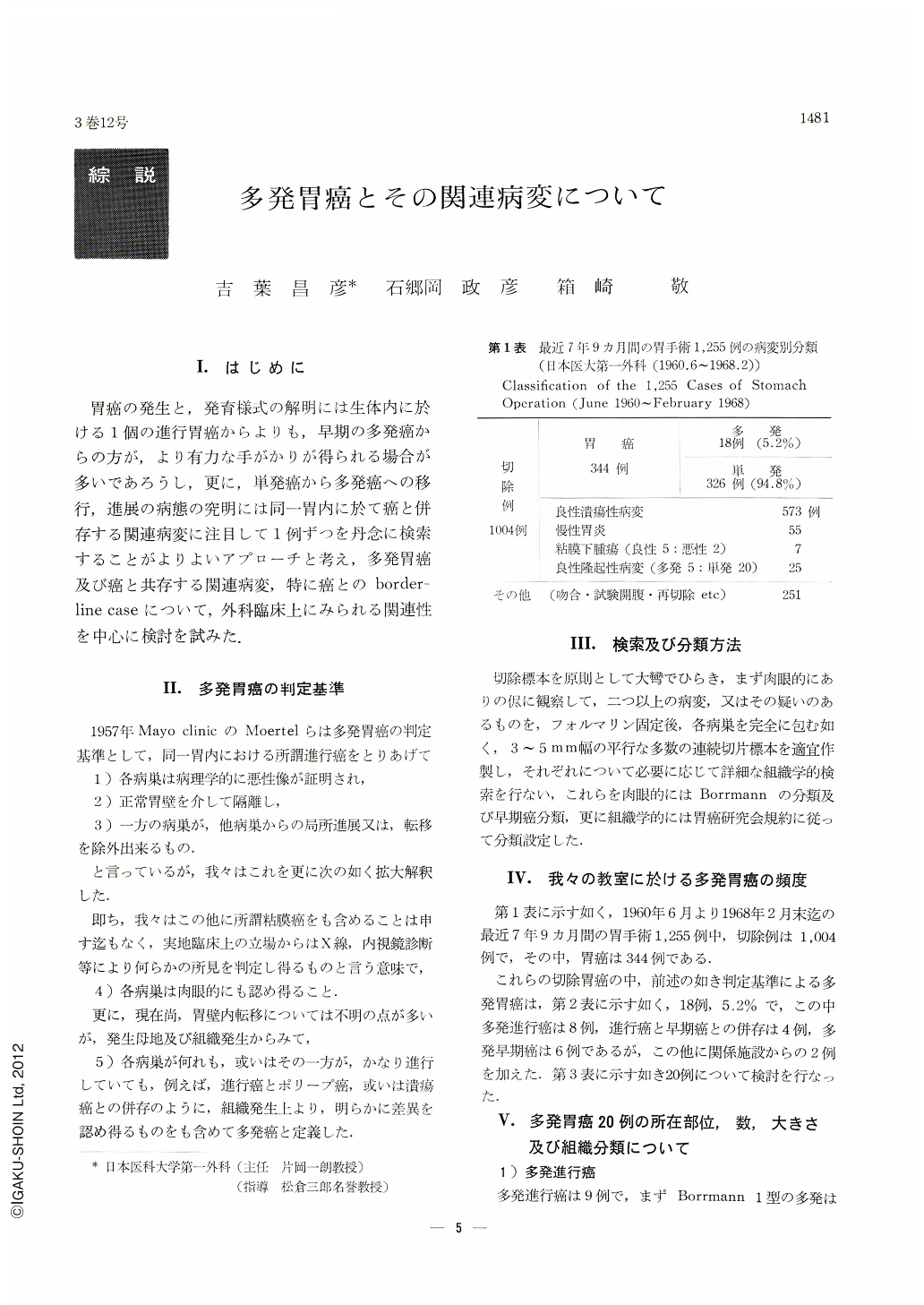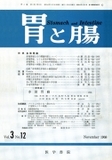Japanese
English
- 有料閲覧
- Abstract 文献概要
- 1ページ目 Look Inside
Ⅰ.はじめに
胃癌の発生と,発育様式の解明には生体内に於ける1個の進行胃癌からよりも,早期の多発癌からの方が,より有力な手がかりが得られる場合が多いであろうし,更に,単発癌から多発癌への移行,進展の病態の究明には同一胃内に於て癌と併存する関連病変に注目して1例ずつを丹念に検索することがよりよいアプローチと考え,多発胃癌及び癌と共存する関連病変,特に癌とのborderline caseについて,外科臨床上にみられる関連性を中心に検討を試みた.
In this article a summary is given as to the clinical significance of the multicentric stomach cancer and its related lesions. This summary is prepared, basing upon the experience of our surgical group for the past seven years and nine months, and special attention is paid to the 39 border-line cases that we handled.
1. The frequency of the multicentric stomach cancer was 5.2 per cent, a rather high figure. As to the age bracket, those 50 years or over are more vulnerable. As to the degree of progress, however, no discernible difference existed among different age groups.
2. As to the co-existence of other lesions, the depression type was the most in number, with 15 cases out of 39. Both protruding type and protrusion/depression type were seen in nine cases each. During the same peried 25 cases of early stomach cancer were detected, among which 18 cases, or about 70 per cent, showed the existence of depression type.
In view of this, and the clinical fact that multiple gastric cancer of depression type or its border line cases in one and the same stomach is quite high, we came to the conclusion that ulcerous lesions associated with cancer of the stomach has a very close relationship with the origination of Type Ⅲ early cancer and Borrmann Type 2 and 3 of the multicentric stomach cancer.
3. It is of great importance, when one is diagnosing stomach ailments, that one should not be too occupied with the principal abnormality within the stomach, but that one should always be careful not to overlook the multicentric stomach cancer.
4. Further, when handling the multicentric stomach cancer, extraordinary care should be taken as to the determination of the extent the excision or the degree of dissection of the regional lymphatic nodes.
5. Even after the resection of the stomach, periodic follow-up of the gastric remnant is a must, to detect possible subsequent growth of multicentric gastric cancer, including that of anastomosed parts.

Copyright © 1968, Igaku-Shoin Ltd. All rights reserved.


